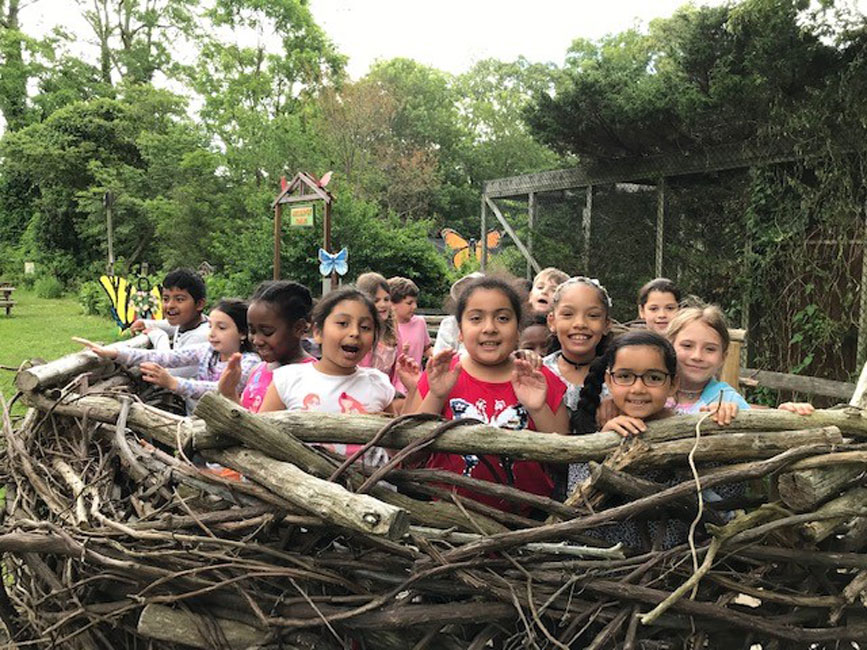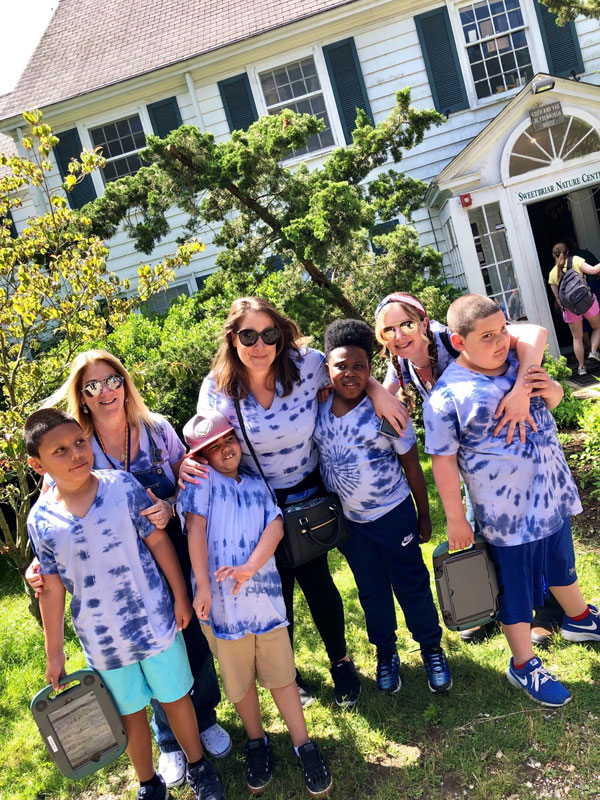It doesn’t take much to get Flower Hill Primary School second graders excited. But a visit to Sweetbriar Nature Center in Smithtown gave the youngsters a legitimate reason to let their imaginations and intellects go into overdrive.
The second graders spent a recent afternoon learning about the “web of life” and the experience kept the youngsters’ attention. The youngsters are studying with Flower Hill teachers Arlette Epstein, Corin Walsh, Brenda McManus, Tiffanie Kelly and Suzanne Giuliani.
At Sweetbriar, the youngsters were able to experience four different learning activities about animal life cycles and interdependence. Taking a nature walk, the students observed different environments that are ideal for different types of animals.
“Becoming grasshoppers, shrews and eagles, we became predators and prey, learning about the food chain and how pesticides can have an effect on the food chain,” Ms. Kelly said. “We met some live animals and learned how the nature center is helping those animals injured in the wild.”
The Flower Hill second graders created an actual “web” of how different living things depend on one another. “I would definitely go back again,” said one student. It was a sentiment that was repeated many times by the youngsters, who seemed to thoroughly enjoy the outdoor learning session.
Sweetbriar provides educational programs for people of all ages. From metamorphosis and butterflies to the tropical rain forest and predator/prey relationships, the center offers a thriving learning atmosphere.
“Our programs are designed to involve participants through the use of live animals, hands-on activities and interactive experiences,” according to Sweetbriar’s website. “It is our hope that all visitors will gain a better understanding and respect for the natural world.”
A private, not-for-profit corporation, Sweetbriar’s mission is to offer natural science education and native wildlife rehabilitation services.
Now in its 47th year, Sweetbriar’s 54 acres are filled with garden, woodland, wetland and field animal habitats on the Nissequogue River. “Hundreds of plants and animals make homes here,” the group’s website states.



